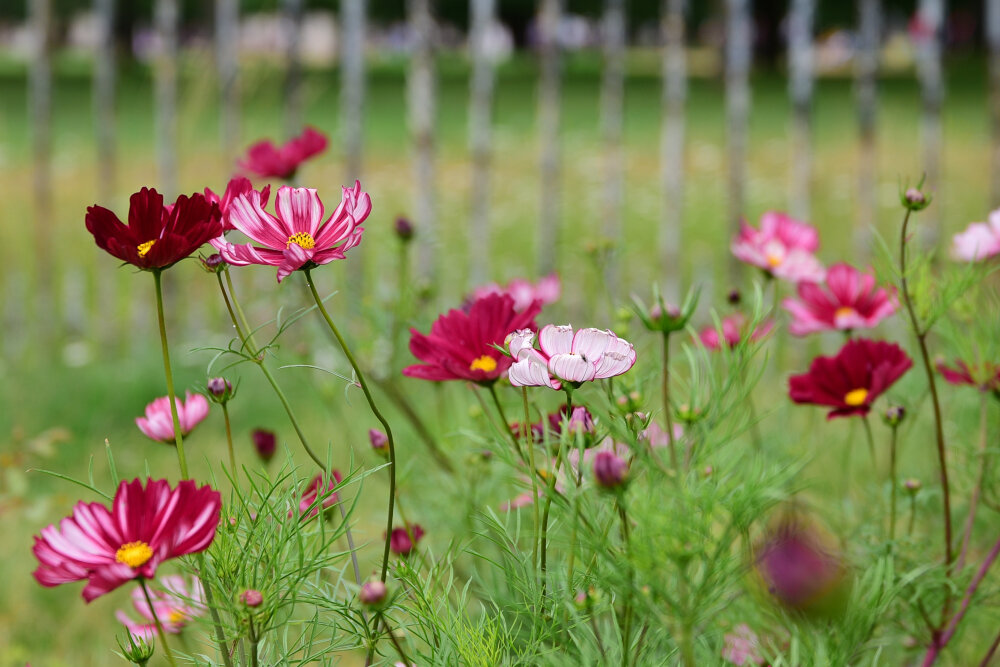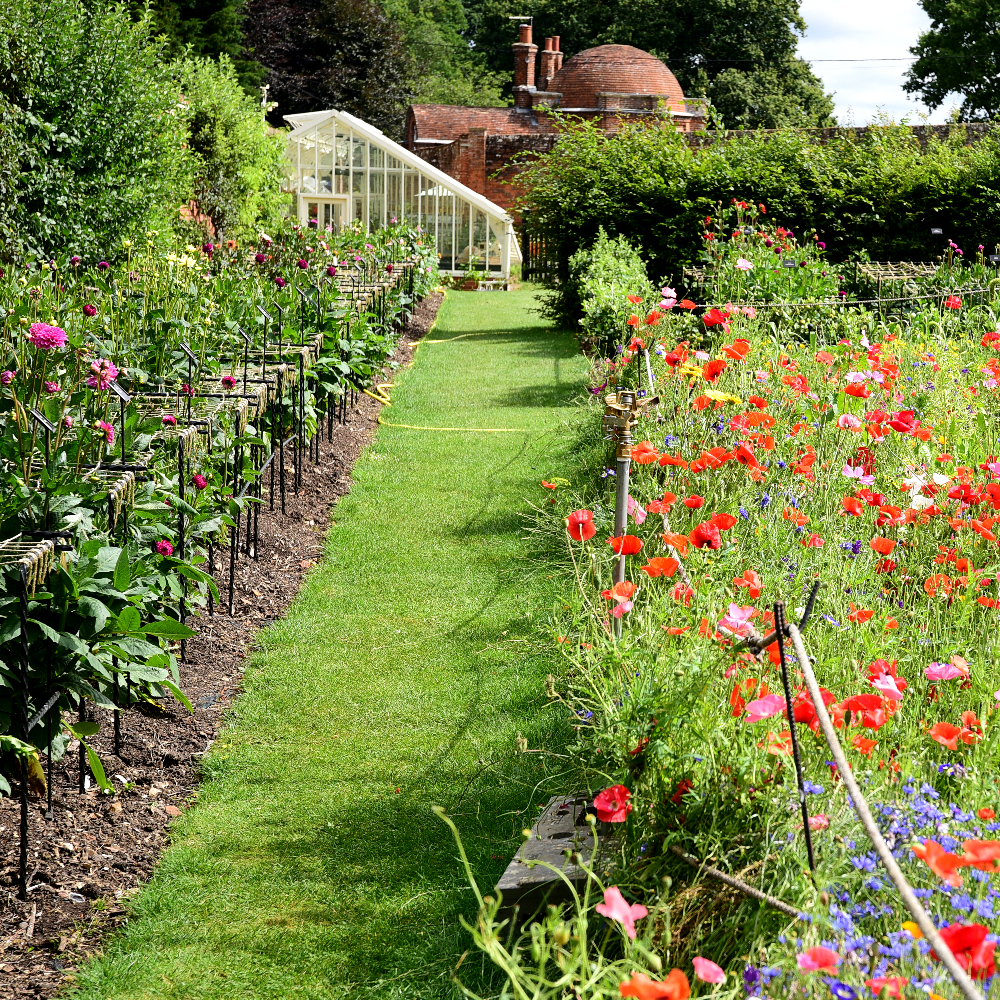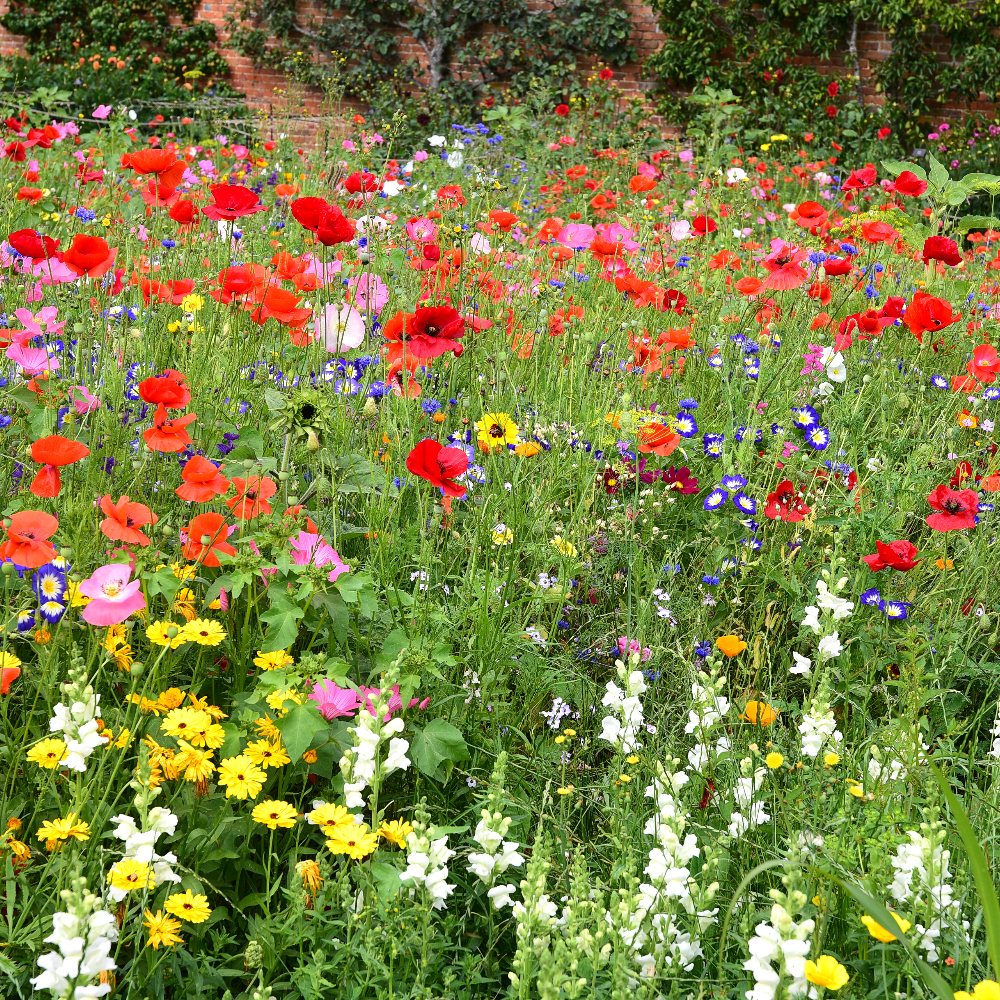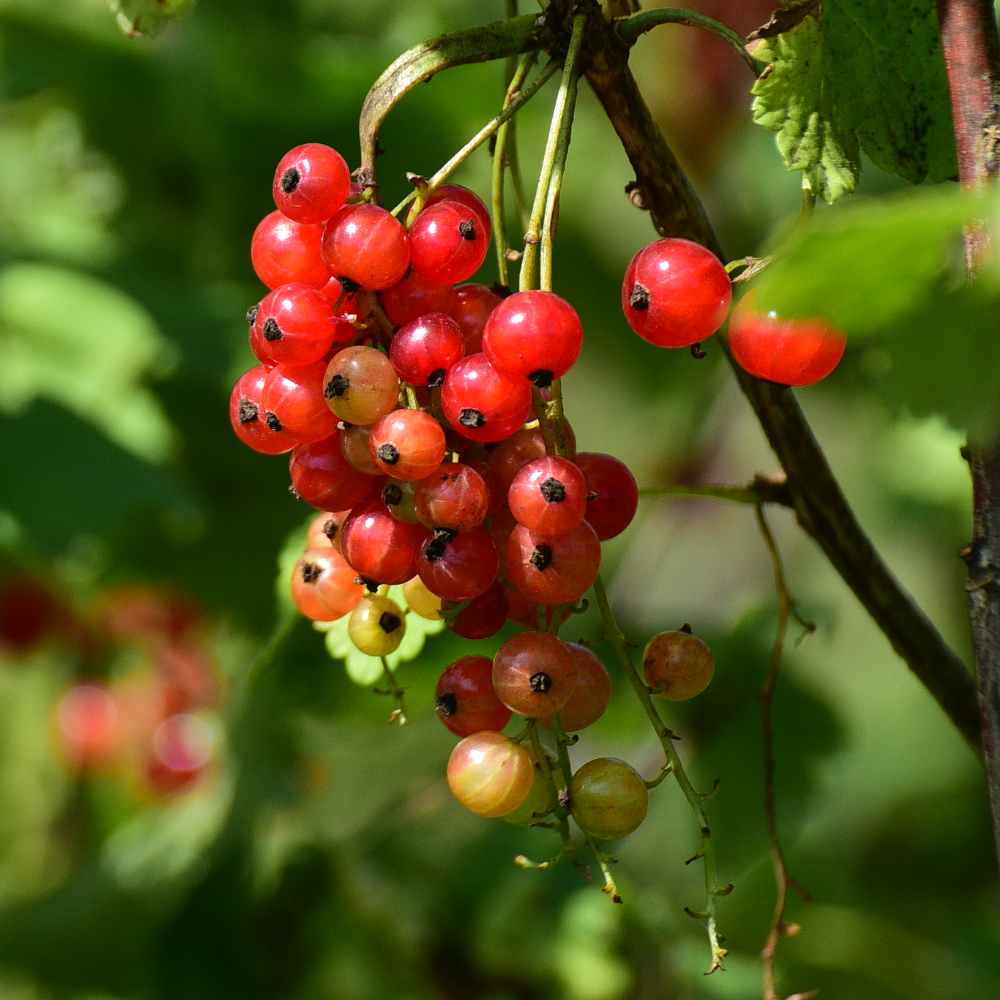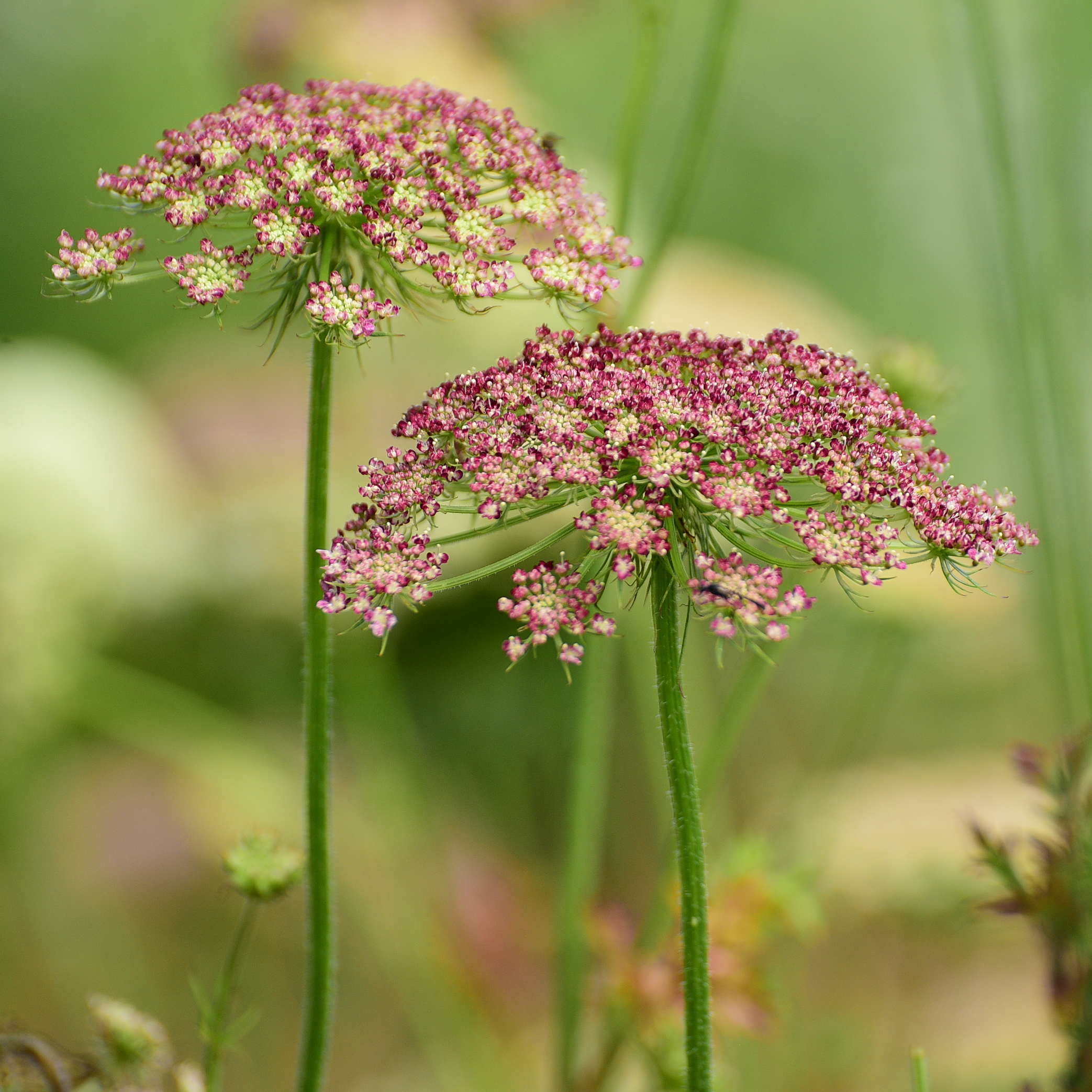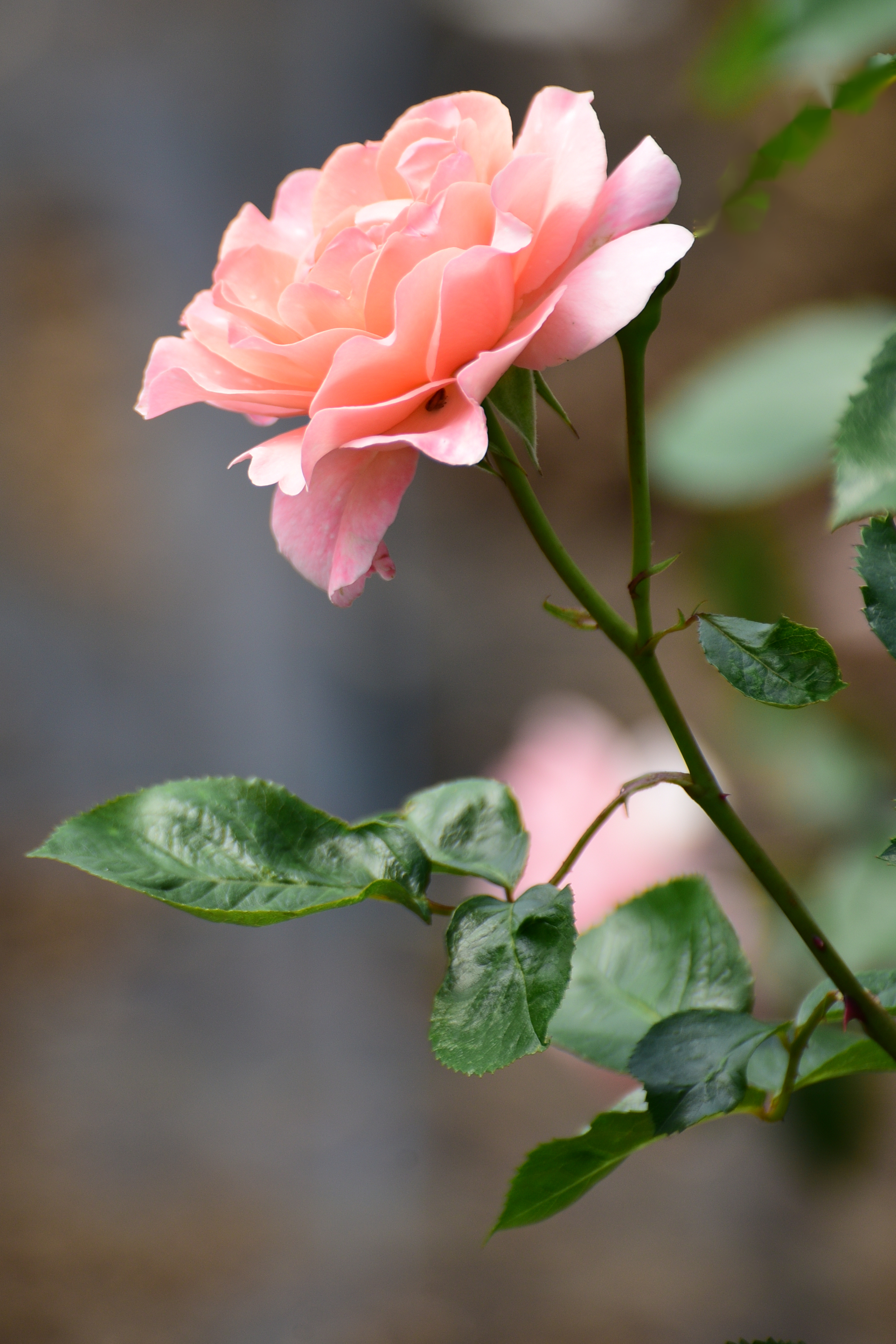Gardening to the rescue - the Hampton Court Flower Show
It’s hard to believe things have returned to normal. Is that because our new normal is anything but? The 2021 Hampton Court Flower Show is the first of the RHS’s shows to open after nearly 18 months of cancellations and delays. There was no social distancing but you had to have proof of two vaccinations or a recent test to get in and you still had to wear a mask in the marquees and loos. What really made it feel normal though was the torrential rain, for an hour at least. It was July afterall.
The first of the show gardens we came across was Mike Long’s aptly named A Place To Meet Again. The meeting again is more to do with meeting previously used materials like scaffold boards, old taps (surely a bit too shiny to have had an earlier life?) and a water harvesting tank (oh yes I’ve got one of those lying around, I always wondered what I could use it for) than getting together with friends and family again. That said, I really liked this garden, especially the green and white plant palette, the use of the grey paving in different shapes and textures and the water harvesting tanks cut up to make a sculptural feature and a seat.
Environmental issues were to the forefront in this show - how to adapt to climate change, how gardens can improve our environment, physically and mentally, how to get started in gardening and the consequences of not taking any of these issues seriously.
Jamie Butterworth’s Feature Garden for a greener future (more about Feature Gardens later) showed how gardens and planting could evolve to adapt to wetter winters and hotter, drier summers with drought resilient plants on mounds and ditches for water run-off and damp-loving plants. From a distance the seating area looked attractive, surrounded by lush vegetation. However, my frequent gripe about show gardens is that they are designed more with tv in mind than with paying show visitors and that is definitely the case here.
In stark contrast is Felicity O’Rourke’s Extinction garden. A salvaged passenger plane (Felicity used to be an airline pilot) shows the effect of our lifestyle, reliance on a very small number of plants to feed us and exploitation of natural resources could cause a sixth global extinction. This design was the most shocking and graphic of the show gardens and was quite a talking point amongst visitors.
Tracy Foster’s Message in a Bottle garden is all about plastic, waste and how plants can be used to replace many materials. For example, the oil from flax can be used as a plastic liner alternative.
Outdoor living and the closeness to nature of Norwegian life was the focus of Will Williams’ garden. The planting and hard landscaping was beautiful, althought the feature waterwall didn’t really feature as I didn’t notice there was water pouring down it.
Back to the Feature Gardens. There were a number of show gardens that were not up for judging. These included the Cut Flower Garden above (these amazing Cosmos bipinnatus are called Velouette), Jamie Butterworth’s Garden for a Greener Future and Tom Stuart-Smith’s Iconic Heroes garden below. They are not judged because they are sponsored by the RHS.
This begs a couple of questions - why are there so many gardens sponsored by the RHS, and does judging really matter? Two of the four Feature Gardens were designed by big names in the garden industry and in all likelihood would have little difficulty in attracting outside sponsorship (or winning gold medals). Jamie Butterworth’s garden was designed to a specific RHS message I suppose and Tom Stuart-Smith’s was a sort of tribute to his career (although he has done a number of these sponsored RHS gardens in recent years).
Generally I find visitors to the Hampton Court Show are less obsessed with medals than those at Chelsea. Even to novice show visitors it is obvious which gardens are better than others. This Garden of Solitude won a bronze medal. It’s good in parts but as a whole doesn’t really deliver on the idea or the implementation. It doesn’t feel anymore peaceful than other gardens at the show, the planting looks a bit random and as for the blue wall…. So why does the RHS bother with medals at all? Surely most of the poor designs are weeded out at the proposal stage. Does the competition for gold medals result in better show gardens? What do you think?
I wasn’t that keen on Amanda Grimes’ Punk Rockery garden to begin with but I had a long time to look at it waiting for a friend to navigate the queue for the loos. Closer inspection and then looking it up it shows what you can do with an unpromising site of rubble and little money.. There is a plant for every type of soil and aspect and many will thrive on almost complete neglect. If the last 15 months have shown us anything it’s that gardening is a deeply ingrained behaviour that can be extremely rewarding. Plants will try really hard to stay alive and will grow in less than ideal conditions so why not just have a go?
My Best in Show award goes to Will Williams’ Legacy Garden for Cancer Research UK. The planting was beautiful and the message strong, emphasised by the enthusiastic staff on the garden.
One thing that’s not changed is the excruciating price of food and drink (or the lack of places to shelter in the rain). My advice as usual is to splash out on the coffee or Pimms and take your own picnic. My friend Joy’s picnic was so good a few people asked us where we got it.
Roll on Chelsea 2021.
The Vyne's Wildflower Garden
The wildflower meadow in the walled garden at The Vyne was born out of need rather than just desirability - there just weren’t enough pollinators to go round. And we all know now that pollinators are needed not just for flowers but for a most of our fruit and vegetables as well.
This is the first year of the planting which is a mixture of annuals and perennials. They are all grown from seed, some sown in situ and others started in the greenhouse and planted out once they’d grown on a bit.
I saw them at the end of July and they looked fantastic. My mother told me they looked even better a couple of weeks earlier but it’s hard to see how. They’ve even stood up well in the record-breaking temperatures of mid-July and the subsequent heavy downpours.
Flowers attract pollinators by offering them pollen and nectar in exchange for fertilisation by travelling from flower to flower. Specific flower types are rich in one or the other or both, and some flowers offer nothing.
Very generally speaking the closer a flower is to its wild beginnings the better it is for nectar and pollen, which is why wildflowers are so beneficial. However, there are also lots of more cultivated varieties which still have something to offer.
Poppies and cornflowers are native wildflowers and pollinators love them. But they also like snapdragons, cosmos and marigolds, none of which are native to the UK. Different shaped flowers attract different types of pollinators; there's a good explanation here - https://www.foxleas.com/flower-shapes.asp.
Flower colour also has a role to play in attracting pollinators. It’s well-known that bright blue flowers attract honeybees and other species have preferences for other colours and scent as well; the scientific research can be read here - https://www.nature.com/articles/srep24408.
Of course we’ve got used to knowing which wildflowers are at their best in high summer, but spring, autumn and even some winter flowering plants are just as important for pollinators - https://www.gardenersworld.com/plants/10-plants-to-help-bees-through-winter-into-spring/.
Although all pollinators are good for our crops and flowers, some are more equal than others. The honeybee can pollinate 80% of our flowers, fruit and vegetables. And almost all honeybees are domesticated, ie they live in hives.
The plight of the British honeybee has been well documented in recent years but the popularity of bee-keeping is helping to check and even reverse this trend. If you’re attracted to the idea of keeping bees get in touch with the British Beekeepers Association - https://www.bbka.org.uk/Pages/Category/what-we-do.
We arrived at The Vyne shortly after opening and I recommend going early to avoid the crowds. The coffee’s not bad and the queue is manageable earlier in the day. However, you do risk the icecream shop not being open…
Despite growing up near here I’ve never been in the house.
The Vyne - https://www.nationaltrust.org.uk/the-vyne
Buy wildflower seeds online - https://wildseed.co.uk/
Green & Gorgeous Flower Farm
I found out about Green & Gorgeous in a magazine and paid a visit on a Saturday late in June. It was a blisteringly hot and eyeball achingly bright day. Not ideal for photography but hey it was a bit of a trek to get there so I had to make the best of it.
On arrival I was sent off to the sweet pea borders. If ever there was proof that if you’re going to do sweet peas properly you’ve got to plant an awful lot of them then this was it. I could smell them before I could see them. Unfortunately my photos of the sweet peas weren’t very good but if you scratch your screen here you can smell them.
Although the main business here is growing flowers for cutting, particularly in summer in full wedding season, Green & Gorgeous is open on Saturdays for you to pick your own sweet peas and select just-picked stems and produce in the shop. Some perennials are also on sale.
I asked if they minded me taking photos and they didn’t so off I wandered. It was a very pleasant way to spend an hour or so, it was just a shame there wasn’t really anywhere to have coffee. Maybe there was but the poor lady in the shop was on her own and I didn’t have the heart to ask as she was pretty run off her feet.
As well as creating floral bouquets for events they also run courses on topics ranging from how to set up and run a flower farm business to flower arranging, and garden photography with Eva Nemeth.
The photography on their website is lovely and the Instagram feed is pretty impressive too. It was great to see a successful business selling local, seasonal produce that doesn’t have a huge carbon footprint.
For those of you desperate for a coffee or other refreshments there’s plenty on offer in nearby Wallingford or Goring & Streatley (if you can find somewhere to park).
Green & Gorgeous - https://www.greenandgorgeousflowers.co.uk
Did anyone scratch?
Lukesland Gardens
I feel very lucky to have friends with friends with amazing gardens. Last weekend I stayed with John and Lorna Howell, owners of Lukesland in Devon.
The garden covers around 26 acres of woodland, streams, arboreta (there's more than one), rhododendrons, azaleas, wild flowers and a kitchen garden.
The garden was started by the Matthews family in the 1860s, followed by the McAndrews in the 1870s, but has been tended to and developed by the Howell family since the 1930s.
The garden has become known for some of its "Champion" trees, which means they are the oldest, tallest or with the largest girth in the county or country. The high level of rainfall, acidic soil and mildish climate makes it ideal for Camellias, Rhododendrons, Azaleas and Magnolias.
.I was told the Rhododendrons were past their best by the end of May but they still looked pretty good to me. However, this is prime Azalea flowering time, the reflections in some of the ponds were particularly stunning, better than the Isabella Plantation I think.
For me the streams and ponds are the highlight of the gardens. Addicombe Brook tumbles through the garden over cascades and Dartmoor granite rocks. It's not without hazard though as floods in recent years have washed away paths, bridges and sculpture and silted up ponds. They've been rebuilt and restored and you'd never know there'd been such devastation.
The wild flowers are also particularly attractive. There are bluebells in the Beech wood and in the Pinetum where they flower in the open with grasses, and along the stream with Red Campion.
The dampness means plants like Iris sibirica, asiatic Primulas, Gunnera and ferns thrive here, as well as some of the trees like the giant coastal Redwoods from the USA.
Lukesland is particularly well known for its three large Davidia involucrata, also known as the Hankerchief Tree, which were flowering during my visit. Unfortunately none of my photos could do them justice but if you're in the area in late spring seeing them is worth a visit on their own.
Although the tea room was busy (and yes I can recommend all the cakes as I tried most of them whilst serving the tea...) the gardens are so large it's easy to find a quiet spot to yourself.
One of the advantages of staying overnight is the opportunity to get up at the crack of dawn and wander around on your own, although the weather conspired against me and I didn't quite get the mist and low sunlight I was hoping for. Next time maybe...
The gardens are only open in the spring and then again in the autumn as the foliage of the Rhododendrons, Azaleas and Acers is stunning I'm told.
This garden is maintained by Lorna and John, John's mother Rosemary (who runs the guided tours) and three very part-time gardeners. Hats off to them all.
Lukesland - http://www.lukesland.co.uk/Index.htm
You can rent a cottage in the grounds - https://www.helpfulholidays.co.uk/cottage/Devon-East-Anstey/The-Clock-House-976251.html
Many thanks to John and Lorna and Rosemary and Desna (and Rob..).
2018 - A good year?
Is 2018 - a good year to remember, or not? Maybe not for some reasons, but, politics aside, ignoring natural and man-made disasters, bad tempers and bad news in general, here is the good news round up of 2018 in the small corner of the world occupied by Arthur Road Landscapes.
A new year, a new day and a new camera on the beautiful island of Barbados. Not too much in the way or horticulture here but when the landscape looks like this who needs a garden?
But of course I couldn’t resist another visit to Hunte’s Gardens.
Having cleverly avoided the Beast from the East, but running full pelt into the Mini-beast, I made a beeline for the Palm House at Kew for a bit of warmth and humidity.
The cold winter and the sudden arrival of a very warm, but late, spring (who knew what was to come?) meant a very good year for bluebells. This little woodland of oak and ash was discovered by my parents in deepest Berkshire.
May means Chelsea. This was my favourite garden, by Sarah Price. Not everyone’s cup of tea, but definitely mine, I’m just waiting for a commission for somewhere in the Med…
At the end of May I visited Lukesland on the edge of Dartmoor. Spring was a little later here so this Wisteria was still in its full glory.
June sees the climax of our native wild flowers. Driving around Surrey I love the road side verges covered primarily in ox-eye daisies. Parts of the M25 are quite spectacular, something to enjoy whilst sitting out a traffic jam. It’s quite tricky finding somewhere to park and photograph them (I haven’t stopped to take any photos on the M25 I hasten to add).
The heat wave started around the middle of June I seem to remember. I went to Loseley Park before the weather began to take its toll and the White Garden here was looking splendid. Of course the thing about white gardens is that they’re not completely white.
July and August seem to have been swallowed up in a blaze of sweltering heat and guilt about using a hosepipe (sorry/not sorry) but at the end of summer I went to The Homewood in Surrey. I hadn’t expected much of the garden but even I was charmed by the heather, Scots pines and rhododendrons.
A very busy autumn meant little time for visiting gardens but I did manage to get the odd half hour or so on Wimbledon Common. Being outside in bright sunshine whenever possible is my way of dealing with short days and long dark nights.
This is beginning to sound like I haven’t done much work in 2018. Well it’s been a funny old year, a mixture of feast and famine. This sweet little courtyard in Twickenham was completed early in the year. The owners are bird mad so hopefully this spring will see a few new residents in the bird boxes.
A large back garden project which has taken a couple of years, was finally planted in October. There’s not too much to see plant-wise at the moment but I’m looking forward to seeing it develop next year.
Maybe not a vintage year but not a bad one either.
Like these photos? Follow me on Instagram.
Return to Allt-y-bela
Unable to resist another invitation to see Allt-y-bela, I trogged down the M4 in the pouring rain.
Last time I was here it was raining too. But, like then, the sun did come out, briefly. In late July this garden is all about the cottage garden and the vegetable plot. In early June it's all roses and wild flowers
It's the wild flower meadows that help the garden merge with the surrounding landscape. Of course they're not really wild in the sense of always having been here; they haven't, they've been planted and sown in the last ten years, but you wouldn't know it just by looking.
But even old wild flower meadows need to be managed - mown at the right time to allow seeds to fall and germinate, the flowers not allowed to lie in situ after mowing but be picked up so the soil fertility doesn't increase and additional species planted that may or may not be typical wild flower meadow plants. Like these Trollius.
The meadows are in fact quite a bit of work, but definitely worth it I think.
The roses were over by the time of my visit last year but this time they were just getting into their stride. I'd love to be able to tell you the names of them all but I found myself a bit distracted.
As the garden is in a bit of a valley the scent is captured and remains in the air, even on a wet day.
Often I have clients say they don't want any roses in their gardens. Memories of municipal monoculture or a faint whiff of the crematorium perhaps? But when planted amongst other shrubs or perennials they can really shine when in flower and disappear into the background when they've finished.
And roses' ability to climb makes them doubly useful, especially if you are short of space or have a few old apple trees that might not be looking their best.
Having a beautiful house does give you a bit of a head start in the gardening stakes. It does take a degree of bravery to turn an off-white ugly duckling into an uskan orange beauty (yes the typo is deliberate).
And when garden designers witter on about good bones and structure this is what they are refering to - good quality hard landscaping that has a beauty and a purpose and fantastic evergreen plants.
Or purple ones.
Chelsea 2016 - The call of the wild
It started last year with Dan Pearson's "barely there" garden based on a real trout stream and has continued at Chelsea 2016 with a slew of other show gardens drawn from nature.
Cleve West's evocation of his childhood on Exmoor is a natural extension of the idea of bringing the wild into the garden. Although Dan Pearson's garden was literally drawn from Chatsworth, Cleve West's garden is slightly less literal. The fabulously atmospheric and architectural trees are Quercus pubescens or Downy Oaks, natives of southern Europe rather than the south-west of England. The stone, however, is from the Forest of Dean, not so very far from Exmoor.
The garden moves from a wilder feel with rough stone paths and native plants on the outskirts to a more designed feel with sawn stone and more exotic species in the centre of the garden.
James Basson has drawn on the landscape of his home in the south of France as the inspiration for his show garden. It is designed as a wild garden on the edge of a lavender field with plants typical of the garrigue of haut provence. Some of the visitors to Chelsea found it hard to understand as a garden, thinking it scruffy and unfinished. The judges thought differently though and apparently it was a close runner-up as best in show.
Other gardens, such as Hugo Bugg's garden based on the geography and flora of Jordan, have been slightly less literal in their interpretation of the idea of wild. His main aim was to draw attention to the scarcity and sanctity of clean water, the wildish landscape is the carrier of the idea rather than being the idea of wild itself.
Rosy Hardy's first show garden was based on the fragility of our chalk streams. I got the bit about dried up stream beds but not the bit about printing money. What are all those metal things? This garden seemed quite a long way from wild, despite its message.
One garden that I really thought had a wild feel was Sam Ovens garden for Cloudy Bay. The theme. the garden as a retreat, would probably have had more success if the site hadn't been on the busy triangular plot at the end of Main Avenue. However, the native pine trees and grasses, with the still water felt pretty wild and ungardened. What a shame the heathers didn't quite come off...
And the complete antithesis to all this wildness? Jo Thompson's Chelsea Barracks garden featured, of all things, a large and neatly manicured lawn. Described as a rose garden for the modern day, it didn't even have a whiff of the crematorium about it. It is a very calm, elegant and spacious garden - proof that a garden doesn't have to be wild for you to feel at one with the world.






